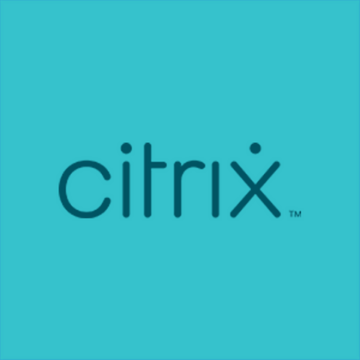This blog post was co-authored by Seshu Venkata, GM VDI Practice, Wipro.
Migrating virtual desktops and applications to cloud can deliver significant value-adds to customers, and organizations everywhere are realizing the range of benefits they can reap when moving their desktop workloads to cloud.
They can enable highly intelligent workspaces, enhance security, perform deeper analytics, and ultimately do a lot more when they move their virtual desktop environments to the cloud.
A successful VDI cloud migration needs a strong technology stack, as well as a coherent strategy and design that ensure that the business gets optimal value from the move to cloud. Through the strategic partnership of Citrix and Wipro, organizations get to do much more than just migrate VDIs to the cloud.
In this blog post, we’ll discuss some of the important strategic elements that can help organization succeed in their cloud migration and deliver better user experiences and business outcomes.
The Strategy to Create Success in the Cloud
In our conversations with customers who have found success with their VDI platforms elusive, we’ve learned that, often, it was the approach rather than the technology that created challenges. Their platforms had been engineered with the goal of moving PCs on their servers, but this created bulky VDIs loaded with apps and profile data, adding undue stress to networks, storage, and servers, which degraded the user experience.
Our key focus when migrating VDIs to cloud is to have a stateless or non-persistent VDI architecture keeping the desktop images clean and the machines light. Though stateless is not a new concept, it’s relevant for cloud transformations because it creates a more robust architecture. While it may not be possible for every machine to be stateless, a dedicated machine should be an exception based on a specific need, not the norm.
Achieving Stateless Environments
Profile Management
A key aspect of moving from a state-based technology to a stateless one involves segregation of personalization data from the image to have an efficient image-management process and to optimize cloud consumption. A nimble profile-management system that dynamically applies profiles while retaining personalization data separately can deliver high-quality user experiences.
Image Engineering
On-premises VDIs tend to have many apps installed on the image, making the image heavy and difficult to manage (much like the PCs before them). This result? The creation of multiple images. While implementing a cloud VDI environment, organizations can re-think image requirements and engineer the packaging of applications in a way so the images are kept lean and the number of images minimized.
Application Packaging and Delivery
Coming up with the right application delivery strategy is crucial to the overall process of migration. Apart from repackaging an application for a new OS on the cloud, there is a need to explore different application delivery models. The licensing and compatibility of the applications — and their implications — also need to be catered to, especially when considering a layered model that can include apps running on a server-based OS.
An aggregated application space with advance control policies can make discovery of applications easy for the users, setting up a future path to leverage advancements like microapps.
Cost Management
Delivering efficient cloud VDI that doesn’t end up consuming most of your cloud resources requires careful planning, which can lead to a significantly better management of cost on cloud. This requires going beyond switching VMs on and off. The design needs to consider options to optimize storage and network costs, along with efficient autoscale technology that can enable smart management of the environment.
Beyond Stateless
Security
Security analytics and risk indexing translate into better managed security on the cloud. VDI deployment on cloud combined with adjacent solutions like Citrix Secure Private Access and Citrix Secure Internet Access will provide secure access to the applications without needing users to log into the VDIs. This ensures user workflows are deeply incorporated into the solution, resulting in a better user experience while maintaining a strong security posture.
Monitoring and Analytics
With a wide array of tools that are currently available for monitoring backend infrastructure, applications and user experience, the challenge becomes how to comprehensively monitor the entire environment and correlate issues with the user experience. Citrix Analytics has capabilities to monitor both user experience and security, and Wipro’s unique IPs and value adds to the environment by monitoring the environment comprehensively. These tools from Wipro are powered by AI and ML algorithms that help to predict user experience issues ahead of time so actions can be taken before issues start impacting users.
Operations Management
Any business transformation requires the early dissemination of knowledge and information to support teams. The same applies to cloud migration. By providing this knowledge to support teams, organization can ensure that any potential issues that do arise can be fixed in a timely fashion, without impacting day-to-day operations, and that the transition is seamless.
To achieve this seamless transition, there needs to constant communication among decision makers, support teams, and end users, as well as between implementation and program management teams. Organizations can achieve this in a variety of ways, such as having hyper-care support and daily huddles, which allow the teams on the ground to interact on a regular basis. This helps to accelerate the identification and resolution of issues versus a traditional ticketing system on its own.
When it comes to moving your VDI from on premises to cloud, technology is the great enabler. Citrix cloud services offer a SaaS cloud VDI management service and extend the VDI solution with Citrix Workspace, Citrix Secure Internet Access, and Citrix Secure Private Access, allowing for end-to-end workspace management. Building on a foundation of innovative technology with partners such as Citrix and Wipro can help organizations leverage the full functionality of cloud services, provide a compelling employee experience, and ensure the success of cloud migrations.
Learn how you can accelerate your desktop and app transformation with Citrix and Wipro and how, together, we can deliver a secure, future-proof desktop virtualization solution.




